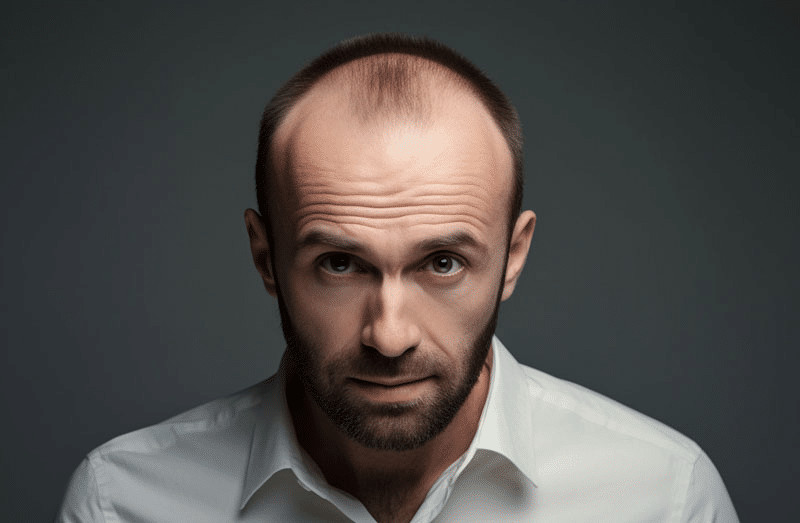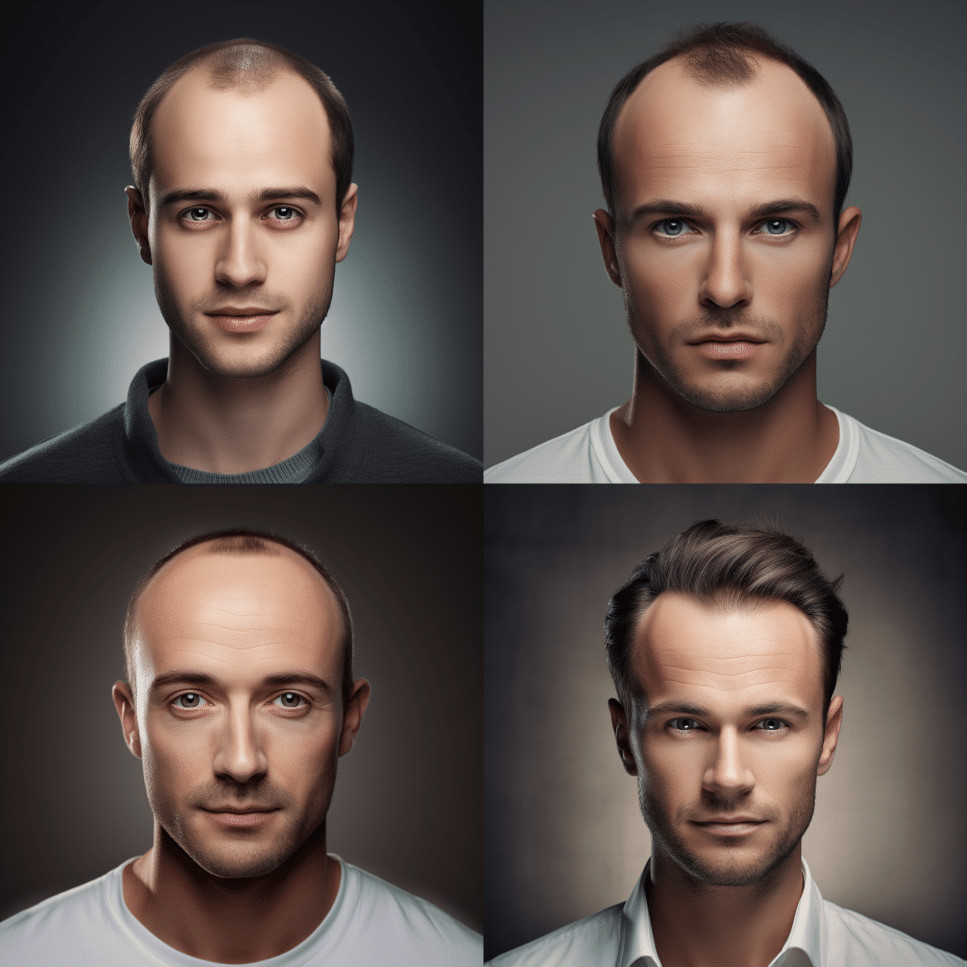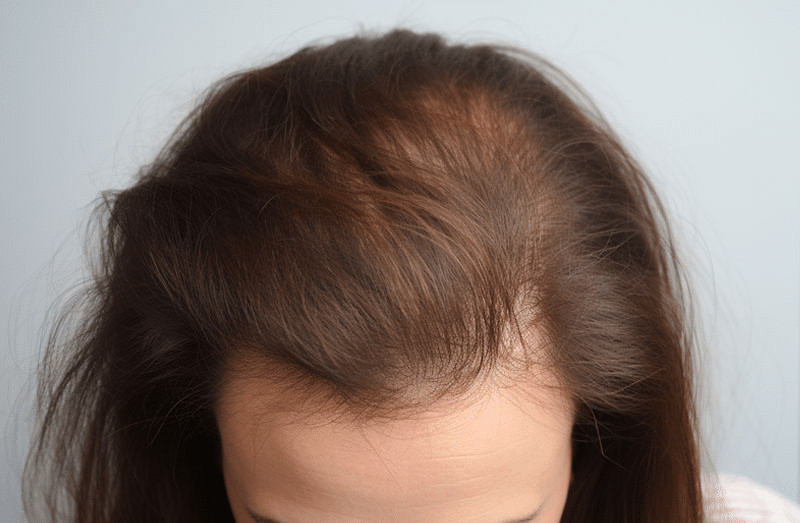Hair loss can be a frustrating and confidence-damaging experience for both men and women. Fortunately, hair transplants have become a popular and effective solution for regrowing lost hair and filling in bald spots. If you are considering getting a hair transplant, you may be wondering if 1000 hair grafts will be enough to meet your needs.
In this article, we will explore the procedure of hair transplantation, discuss the potential effectiveness of 1000 hair grafts, and provide insights into what factors may influence the number of grafts needed for successful hair restoration. So let’s dive in!
What is a hair graft?

A hair graft, also known as a follicular unit, is a small cluster of hairs that are transplanted from one part of the scalp to another during hair transplant procedures. Each graft typically contains 1-4 hairs and is carefully extracted and placed by a skilled surgeon. So will a 1000 graft hair transplant procedure be enough to
Typically, this means that 1000 hair grafts will not cover your bald spot, as there may not be enough hair follicles in that number of grafts. It is very rare that 1000 donor hair grafts will result in a natural appearance unless the patient suffers only from fine hair or limited hair loss, and not from extensive hair loss. Therefore, most patients with typical balding pattern need at least 1500-2500 grafts in order to restore hair coverage.
The Two Main Types of Hair Transplant Procedure Options

There are two main methods for harvesting hair grafts: Follicular Unit Transplant (FUT) and Follicular Unit Extraction (FUE).
In FUT, a strip of skin containing multiple follicular units is removed from the back or sides of the head and then dissected into individual grafts. This method allows for the extraction of a larger number of grafts in one session but leaves behind a linear scar.
On the other hand, FUE involves extracting individual follicular units directly from the scalp using a small punch tool. This method leaves tiny, circular scars that are easily concealed by surrounding hair. However, it may be more time-consuming and costly to extract a high number of grafts with this method.
Both FUT and FUE have their advantages and limitations, so it’s important to discuss with your doctor which method is best for you based on your specific needs and expectations.
The Difference Between a Hair Graft vs Hair Follicle

Hair Graft:
A hair graft is more than just a collection of hair – it is a complex structure that consists of multiple components, including the hair follicle, sebaceous gland, and arrector pili muscle. Understanding the anatomy of a hair graft can help explain its role in successful hair transplantation.
The hair follicle is the most critical component of a hair graft as it contains all necessary elements for new hair growth: the dermal papilla, which supplies nutrients to the growing hair; blood vessels, which nourish and oxygenate the follicle; and melanocytes, which give color to the hair.
The sebaceous gland produces sebum, an oily substance that helps lubricate and protect both the hair and scalp. It also plays a role in the overall health of the hair follicle.
Hair Follicle:
The hair follicle is a small, dynamic structure located in the dermal layer of the skin. It is responsible for producing and maintaining healthy hair growth. Each hair follicle has three main parts: the dermal papilla, the bulb, and the germinal matrix.
The dermal papilla is a key component of the hair follicle as it contains blood vessels that supply important nutrients to support hair growth. This structure also plays an essential role in regulating the hair growth cycle by sending signals to other cells in the follicle.
The bulb is located at the base of the hair follicle and contains matrix cells that divide rapidly to produce new hairs. These cells are rich in keratin, a protein that gives strength and structure to our hair. The germinal matrix is a band of cells located above the bulb. These cells are responsible for producing new hairs and determining their characteristics, such as texture, color, and thickness.
1 Graft = How Many Hair Follicles?
When it comes to hair transplantation, understanding the relationship between grafts and hairs is crucial. A common question that many people have is how many hairs can they expect from a single graft? Will it be the correct number of hair grafts required to cover your bald or thinning spots?
The answer to this question can vary depending on factors such as the thickness and density of your hair, the quality of your donor area, and the expertise of your surgeon. In general, however, each graft typically contains anywhere from 1-4 hairs.
This means that if you receive 1000 hair graft for your transplant procedure, you could potentially see anywhere from 1000 to 4000 new hairs growing in. However, that may sound like more than you think. Typical hair loss requires a larger graft hair transplantation for most female and male pattern baldness situations.
How many grafts do I need?

Determining the number of grafts needed for a successful hair transplant depends on several factors and can vary from person to person. It’s not as simple as just counting the number of bald spots on your scalp. In fact, even individuals with similar levels of hair loss may require a different number of grafts based on their unique hair characteristics and desired results.
One important factor that influences the number of grafts needed is the size and location of the balding areas. Typically, smaller areas such as receding hairlines or male pattern baldness of thinning hair may require fewer grafts compared to larger areas like a completely bald crown. This is because fewer grafts are needed to cover smaller areas without making it look overdone or unnatural.
Another important consideration is the density of your hair in the donor area, which is usually at the back and sides of the head. The thicker and healthier your hair in this area, the more grafts can be harvested without causing noticeable thinning or scarring.
Factors that affect hair graft calculation

Here are some additional factors that your doctor may take into account when calculating the number of hair grafts needed for your transplant:
1. Hair type:
The thickness, texture, and color of your hair can influence the number of grafts needed. If you have thick or curly hair, it may take more grafts to cover the same area compared to someone with fine and straight hair.
This is because thick or curly hair provides more coverage and volume than finer hair types. Similarly, if you have dark hair, it may also take more grafts to achieve the desired coverage compared to someone with lighter hair as darker hair creates a stronger contrast against the scalp.
2. Hairline design:
The design of your hairline can also play a significant role in the number of grafts needed for a successful transplant. Your surgeon will work with you to create a natural-looking hairline that is appropriate for your face shape and age.
For example, if you have a more advanced stage of hair loss, creating a lower and straighter hairline may require more grafts compared to someone who has only minor receding at the temples. Additionally, individuals with naturally high foreheads or widow’s peaks may require fewer grafts to achieve their desired look.
3. Desired density:
Another factor that can affect the number of grafts needed is the desired density of your hair. If you have a more significant amount of balding or thinning, you may want a higher density to achieve thicker and fuller-looking hair. This will likely require more grafts compared to someone who has minimal hair loss and wants a more natural, less dense look.
It’s essential to discuss your expectations with your hair transplant surgeons so they can determine how many grafts are needed to reach your desired density. Keep in mind that too high of a density can result in an unnatural appearance, while too low of a density may not provide enough coverage.
4. Surgical technique:
The type of surgical technique used can also influence the number of grafts needed for a successful hair transplant. Advanced techniques such as follicular unit extraction (FUE) and direct hair implantation (DHI) allow for more precise placement of grafts, meaning fewer may be needed to achieve optimal results.
On the other hand, traditional techniques like follicular unit transplantation (FUT) may require more grafts as they involve removing a strip of skin from the donor area and then dissecting it into individual grafts. This can limit the number of available grafts compared to fue hair transplants or DHI.
5. Budget:
Your budget may also be a factor in determining the number of grafts needed for your hair transplant. While it’s essential to choose a reputable and experienced surgeon for optimal results, the cost of a hair transplant can vary significantly depending on the number of grafts needed.
It’s important to have a realistic understanding of what you can afford and work with your doctor to develop a treatment plan that fits within your budget while still achieving satisfactory results. Keep in mind that multiple sessions may be necessary for larger procedures, which can affect the overall cost.
Realistic expectations and desired results

Ultimately, the number of grafts needed for a hair transplant will depend on your individual needs and desired results. It’s essential to have realistic expectations and understand that one session may not achieve your desired result. In some cases, multiple sessions may be necessary to reach the desired density and coverage.
Discussing your goals and concerns with a qualified hair transplant surgeon can help you determine the appropriate number of grafts needed for a successful outcome. With advancements in technology and techniques, more significant numbers of grafts can now be extracted and transplanted in one session, providing natural-looking results with minimal scarring.
So don’t hesitate to schedule a consultation and start your journey towards fuller, healthier hair. Remember, it’s important to choose a skilled and experienced surgeon to ensure the best possible results. And with the right number of grafts, you can achieve a thicker, fuller of how much hair and boost your confidence for years to come.
Hair Graft Calculation For Women

While the principles of hair graft calculation for women are similar to men, there are some key differences. Women typically have a more diffuse pattern of hair loss compared to men, meaning that they may experience thinning throughout the scalp rather than in specific areas.
Women tend to have finer hair and a lower donor density compared to men. This means that they may require more grafts or multiple sessions to achieve their desired results.
It’s essential for women considering a fue hair transplant procedure to consult with an experienced surgeon who has experience working with female patients and can address their unique needs and concerns.
How many hair grafts does the average person have for a hair transplant?

Here are some general guidelines for the average number of hair grafts needed based on different stages of hair loss:
Minor recession at the temples: 500-1000 grafts
Early-stage hair loss with thinning on top: 1000-1500 grafts
Advanced hair loss with significant balding on top: 2000+
Keep in mind that these are just rough estimates and may vary depending on individual factors. It’s best to consult with a qualified surgeon for an accurate assessment and personalized treatment plan for your specific needs. Ultimately, the goal is not to focus on the number of grafts but rather achieving natural-looking results that meet your expectations.
Is a 1000 graft hair transplant right for you?

Ultimately, the decision of how many hair grafts you need for a transplant will be determined by your surgeon after an evaluation of your individual needs and goals. While 1000 hair grafts may be sufficient for some individuals with minor hair loss or thinning, others may require more to achieve their desired result. This comes down to both hair density and the amount of transplanted hair one needs to restore hair over the entire scalp.
If you’re considering a hair transplant, it’s crucial to have realistic expectations and understand that multiple sessions may be necessary to reach your desired density and coverage. Consulting with a skilled and experienced surgeon can help you determine the appropriate number of grafts needed for a successful outcome.
While 1000 hair grafts required for some people, it’s best to consult with a qualified professional and explore all available options before making a decision. By doing so, you can ensure a successful and satisfactory outcome for your hair transplant journey. So don’t hesitate to schedule a consultation and take the first step towards achieving fuller, healthier hair.
FAQs
What is the maximum number of hair grafts?
The maximum number of hair grafts that can be safely transplanted in one session will vary depending on individual factors. Generally, it is recommended to limit the number of grafts to 3000-3500 to ensure proper healing and minimize potential risks.
Which Type of hair transplant surgery will I need?
The type of hair transplant surgery recommended will depend on various factors such as the extent of hair loss, donor hair availability, and your desired results.
How Do I Calculate How Many Hair Grafts I Need?
Hair graft calculation is typically done by a qualified surgeon during an evaluation. It involves assessing the extent of hair loss, donor hair availability, and desired density to determine the appropriate number of grafts needed for a successful outcome.

